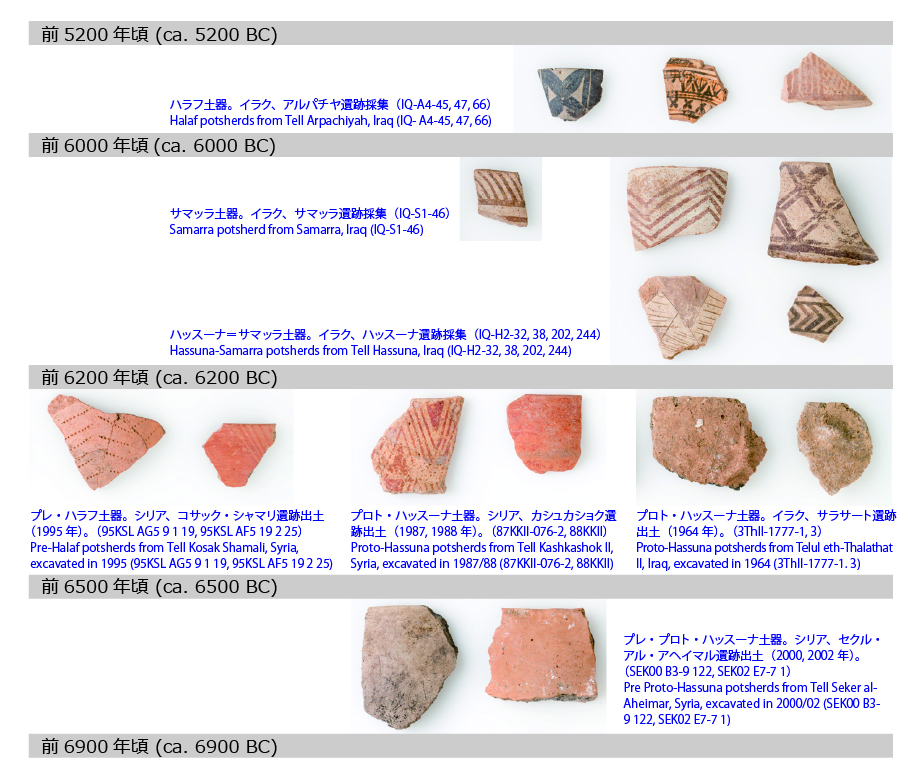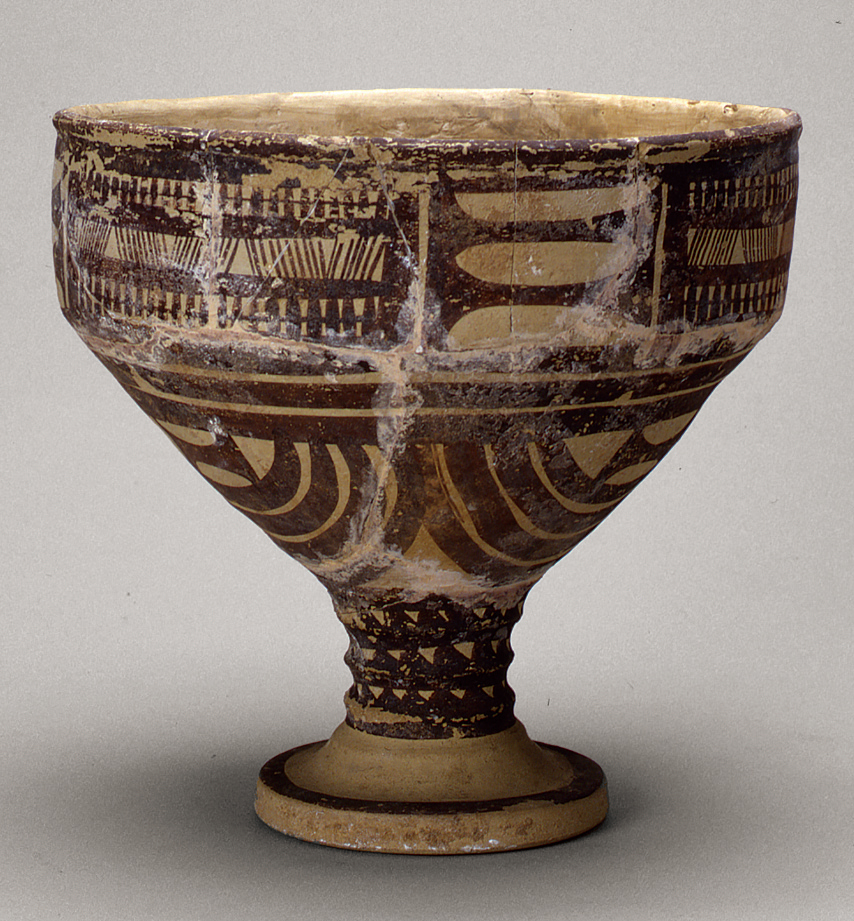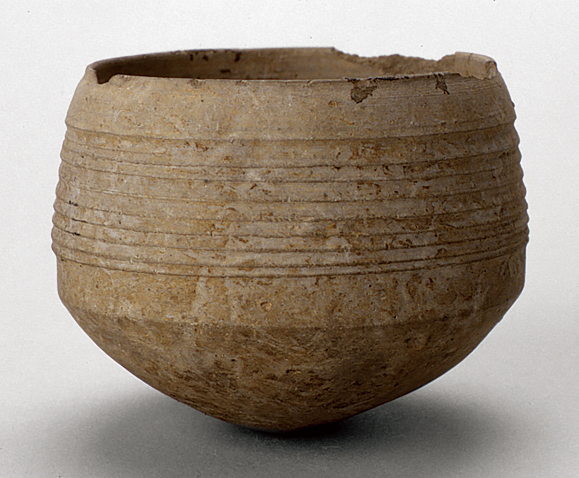G2
Chronology in prehistoric Upper Mesopotamia
arranging potsherds collected from various sites
Pottery is one of the most general artifacts recovered from archaeological sites. Even with tiny potsherds, the collection provides significant information. Potsherds from Upper Mesopotamia are arranged in chronological order; they cover the range of the Late Neolithic period (ca. 7000–5100 BC). Specimens from Tell Seker al-Aheimar were a new discovery from the oldest pottery vessels. Succeeding potsherds demonstrate the diversity depending on the site. Since the late 7th millennium BC, however, elaborate paint decoration flourished across the region. What happened in those days? Why did pottery change in such way? Thus, new research topics are introduced.
Two nearly complete vessels dated 3100–2550 BC, were recovered from Upper Mesopotamia as well. A pedestal bowl demonstrates a long-established painted pottery tradition, while the advanced skill of the specialized potter is suggested by a plain wheel-made cup with a hardly-fired thin wall from the same site. It indicates the final stage of the prehistoric era; the influence of urban societies was imminent, which was already established in Lower Mesopotamia. (Takahiro Odaka)
References
谷一 尚・松谷敏雄(1981)『東京大学総合研究資料館考古美術(西アジア)部門所属考古学資料目録 第1部 メソポタミア(イラク)』東京大学総合研究資料館標本資料報告第6号、東京大学総合研究資料館。
深井晋司・堀内清治・松谷敏雄(編)(1974)『テル・サラサートⅢ 第五号丘の発掘 第四シーズン(1965年)』東京大学イラク・イラン遺跡調査団報告書15、東京大学東洋文化研究所。



